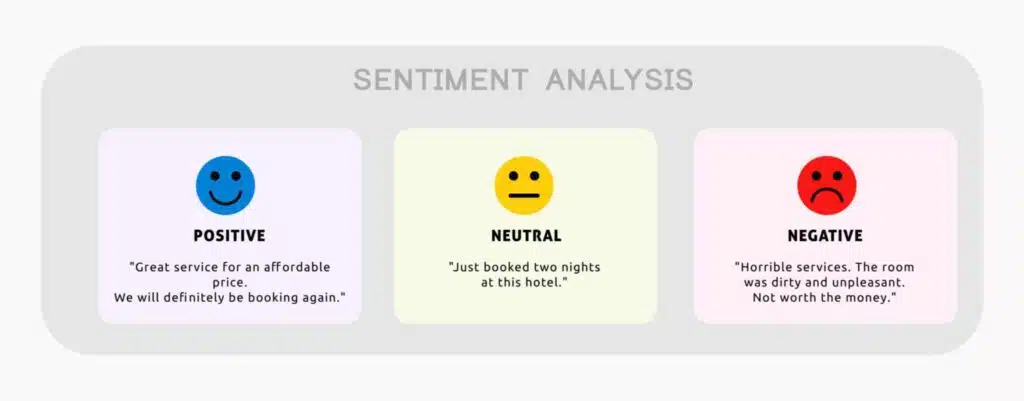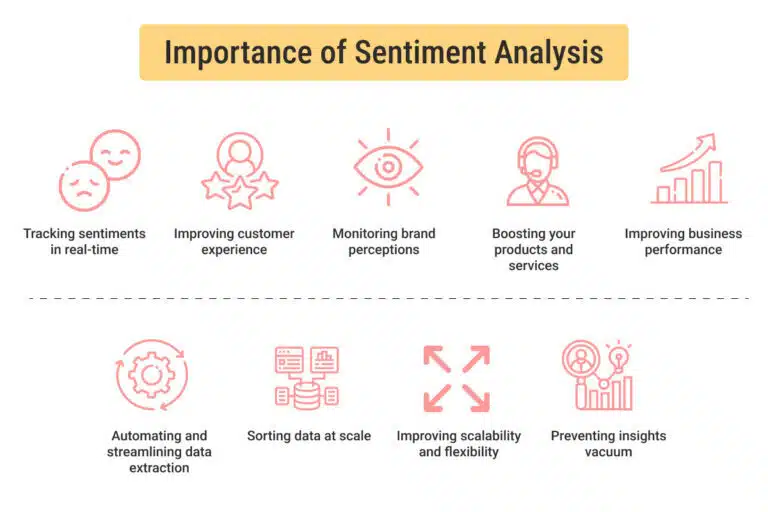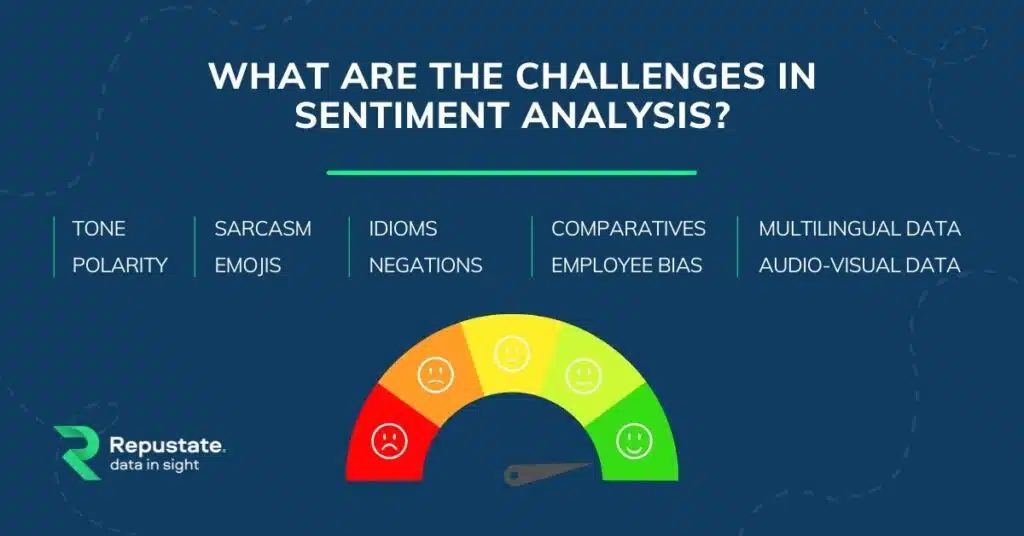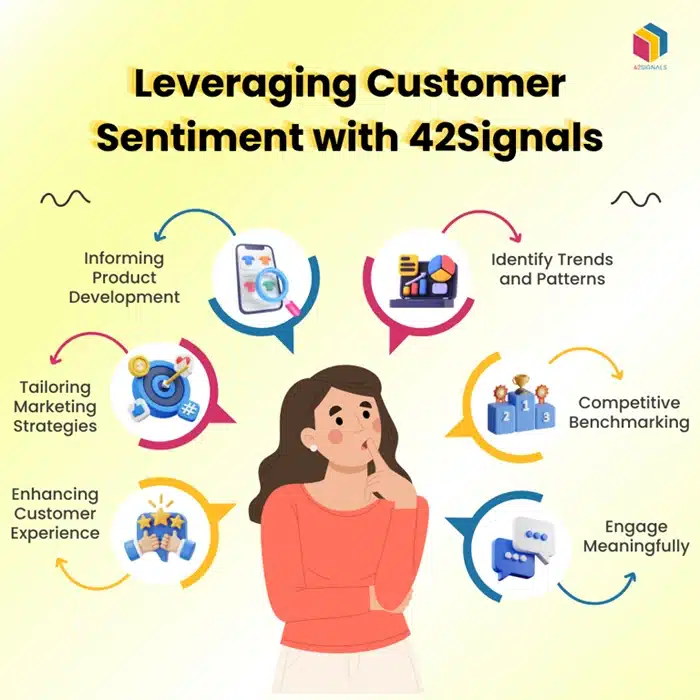The shopping habits of consumers have been disrupted multifold due to the emergence of Quick commerce, or Q-commerce. The brand’s focus now changes from providing good services to providing services promptly. With such rapid innovations, day-by-day market analysis services become outdated and businesses require real-time services.
This is where sentiment analysis data and social listening play a role. By monitoring customer’s social media conversations, brands can detect demand and trends ahead of time and also make necessary changes to pricing or stock levels. So how does sentiment analysis data aid q-commerce? Let’s break it down.
What is Sentiment Analysis?

Image Source: ExpressAnalytics
Sentiment analysis refers to the detection as well as classification of emotions contained in text data. In simpler terms, it determines whether customer sentiments are positive, negative, or neutral.
Sentiment analysis employs tactics based on natural language processing (NLP) which operates in categories of sentiments such as product reviews and posts shared on social media or public forums. These tools combined with machine learning technologies can accomplish studying vast amounts of unstructured sentiment analysis data. The ability to measure client satisfaction enables businesses to understand customer pain points, and brand perception and identify emerging trends.
As an example, if a new organic skincare line is receiving positive reviews from hundreds of customers praising its “gentle ingredients”, sentiment analysis tools can pick up on the positive sentiment. Conversely, if a food delivery service receives negative reviews due to recurring operational delays, the business can now address the gaps in its processes without any further loss.
Sentiment analysis is crucial in the context of quick commerce where consumer preferences change rapidly. Knowing customer sentiments in real time enables businesses to improve their decisions concerning product offerings, marketing, and services.
What is Social Listening?
How to Effectively USE Social Listening to Transform your Brand?
act of tracking conversations on social media, forums, and blogs to find out what people are saying about a brand, product, or industry. It enables companies to monitor customer feedback, perception of their brand, and market trends.
Social listening differs from basic social media monitoring which focuses on mention and keyword tracking. Social listening does not stop at the mention of a keyword rather, it interprets underlying motives behind discussion towards a certain brand or product.
Social listening is a must for quick commerce brands. It enables them to track customer feedback as it happens, adapt marketing and inventory management, and keep up with consumer preferences.
For instance, if a certain protein bar is trending on Twitter because of a viral fitness challenge, Q-commerce platforms can get the inventory ready in advance. On the other hand, if a brand is being criticized for deceptive packaging, businesses can opt out of that product to minimize risk of negative consumer backlash.
How Sentiment Analysis Strengthens Social Listening
Social listening provides unfiltered information stemming from social media, while sentiment analysis assigns a specific meaning to the feedback. With sentiment analysis data, businesses can classify the voices of the customers into positive, negative, or neutral retuning deeper insights.
Here’s how sentiment analysis enhances social listening in quick commerce:
- Detecting Consumer Sentiment Trends: Social listening systems accumulate huge volumes of text, and with the help of sentiment analysis, businesses can recognize shifts in customer sentiment. If there is growing anticipation about a new snack made from plants, they can react and modify inventory in advance.
- Understanding Customer Pain Points: It is not enough to simply know that people are talking about a brand. A business can identify major concerns like inadequate packaging or quality inconsistencies through sentiment analysis using product review data, allowing for appropriate measures to be put in place.
- Tracking Brand Perception Over Time: Unstructured data sentiment analysis allows businesses to track changes in brand perception over time. A previously reviewed product could be getting favorable perceptions over time, or the other way around, which can help build data-driven business strategies.
- Improving Customer Engagement: For social media listening, sentiment analysis data allows businesses to address concerns, which can shift the attitude of dissatisfied customers towards loyalty.
For instance, a Q-commerce brand was facing consistent complaints about delayed delivery times from users on Reddit. The analysis pinpointed the issue as a delay with orders placed after 9 PM. The business adjusted its operations, improving the efficiency of its delivery processes and reducing negative sentiment.
How Reliable is Sentiment Analysis in Social Listening?
While sentiment analysis is a powerful tool, it’s not always perfect. This is because human emotions are complex, and language is often ambiguous. With people using sarcasm, irony, and slang terms, automated sentiment analysis stands little chance of accurately interpreting sentiments.
Imagine a customer posting sarcastically, “Wonderful, just what I needed, another late delivery!” An algorithm may interpret it as positive instead of negative. The challenges compound further when trying to derive a single sentiment score from mixed opinions like “The product quality is amazing, but delivery was terrible.”
Despite this, progress in analyzing sentiment data and developing AI models continues to enhance precision. Combining sentiment analysis with human review, contextual analysis, and multilingual detection of sentiments provides businesses with deeper insights to improve their understanding of customer sentiment.
Why Quick Commerce Needs Sentiment Analysis Data

Image Source: Needl
1. Real-Time Trend Tracking
Quick commerce thrives on instant gratification. Sentiment analysis data allows brands to take notice of emerging interest in specific products like a new skincare brand or trending snack, ahead of competitors. Expecting ultra-fast deliveries, consumers are quick to jump on trends.
A great example remains the rise of Korean beauty products. Many Q-commerce platforms were able to anticipate demand and alter inventory thanks to sentiment analysis of unstructured data on Instagram and beauty forums.
2. Demand Forecasting for Inventory Management
Knowing what to stock is always a tricky situation. When the amount of stock is too much, there is a risk of wastage, but if it is too little, there is a risk of missing out on sales. Sentiment analysis through product review data enables brands to determine what demand patterns look like by examining whether customers are excited (or displeased) about certain products.
For instance, during holiday periods, brands can use sentiment data analysis for certain gift sets to estimate the enthusiasm measured for the gift sets. If the sentiment indicates that a particular brand’s holiday edition is doing well, quick commerce businesses should be able to alter stock levels.
3. Competitive Pricing Strategy
Pricing is a key battleground in quick commerce. Through the analysis of sentiment data from reviews of competitors, businesses can adjust their pricing strategy. If customers frequently mention that a competitor’s product is “overpriced” or “not worth the money,” a brand can leverage this insight to offer better value and attract price-sensitive shoppers.
A study found that 87% of shoppers compare prices before making a purchase. With the emergence of sentiment analysis data, businesses can track pricing trends and constantly change them accordingly to remain competitive.
4. Customer Sentiment on Delivery Experience
In quick commerce, near-instant delivery is simply expected. Sentiment analysis provides insight into customer complaints, compliments, and praise on the delivery timeframe, packaging, and product condition fulfillment. Companies can take necessary corrective action based on the operational gaps identified.
For example, if several customer reviews point to ice cream deliveries coming in a melted state, it illustrates a need to redesign cold-chain logistics. Resolving these problems improves customer satisfaction and loyalty.
How Sentiment Analysis Helped a Quick Commerce Brand Succeed
As an example, let us consider a quick commerce brand that deals in gourmet snacks. There was noticeable interest in online conversations revolving around plant-based protein chips and they intended to capitalize on this. With sentiment analysis data, they were able to determine that there was positive sentiment toward certain flavors and experiences, so they partnered with a supplier to stock them.
Moreover, they monitored sentiment analysis data around competitor reviews. Consumers were frustrated with another brand’s high salt content, so they advertised their low sodium alternative. And, within weeks, sales of their plant-based chips boomed along with gaining a competitive edge.
Challenges in Sentiment Analysis for Quick Commerce

Image Source: Repustate
Sentiment analysis of unstructured data always provides value, but it comes with a number of problems:
1. Understanding Sarcasm and Context
Reviews and tweets often feature sarcasm and irony which can be incredibly difficult to understand. A customer saying, “Wow, loved waiting 2 hours for my ‘quick’ delivery.” will be classified as positive when it’s actually negative.
2. Filtering Noise from Relevant Data
Companies need to pay attention to data that can truly drive results by filtering irrelevant conversations. AI-powered sentiment analysis tools provide support, albeit on a limited scale. Human input is still very important.
3. Handling Multi-Language Sentiment
Quick commerce operates in diverse markets, meaning sentiment must be analyzed across multiple languages and dialects. Businesses looking to expand internationally can utilize AI systems designed for analyzing sentiments in multiple languages.
How to Get Started with Sentiment Analysis in Quick Commerce
- Choose the Right Tools: Software such as Brandwatch, Sprinklr, and 42Signals aid in tracking sentiment analysis from many channels.

Image Source: 42Signals
Generic sentiment analysis tools may not always meet specific business needs. With PromptCloud’s custom web data extraction solutions, businesses can collect tailored sentiment data from niche sources, including competitor reviews, industry-specific forums, and localized consumer discussions.
- Integrate with Sales Data: Integration of Sentiment analysis data with sales scouts must be done in a manner that allows for real-time-actionable insights.
- Monitor and Adapt: Sentiment analysis is not the type of thing that can be done once. Continuous tracking needs to be done to keep a step ahead of competition and changes in customers’ expectations.
Staying Ahead with Sentiment Analysis Data
Being in the quick commerce industry, you know how fast and frequent customer sentiments change. Businesses need to utilize sentiment analysis data to track different trends, adjust pricing, and improve overall customer experience, so businesses can thrive in the fast-paced world.
Applying sentiment analysis using product review data allows the brand to have better insights that support smarter decisions. Whether predicting the next viral sales or delivery logistics reordering, social listening and sentiment analysis make the difference in Q-commerce. Would you like help setting up a sentiment analysis strategy for your business? Get in touch today!





















































